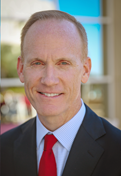Harry S. Dent Jr.'s Blog, page 122
January 7, 2016
Dead Broke: No Jobs, No Savings
 Recently, I received a notice from my insurance company regarding the update for my health care policy. For the privilege of renewing my policy, the insurance company upped the premium 23%, despite the fact I didn’t use any medical services in 2015.
Recently, I received a notice from my insurance company regarding the update for my health care policy. For the privilege of renewing my policy, the insurance company upped the premium 23%, despite the fact I didn’t use any medical services in 2015.
That got me thinking. Seven years after the financial crisis bottomed out, are we really better off? Are people getting jobs? Are they high-paying jobs? Do Americans have enough income to pay for sharp increases in health care costs or even rapidly rising food prices?
Turns out the answers are scary!
Why is that?
Well, job growth has slowed and Americans are broke.
We already know that the percent of Americans participating in the labor force is at a generational low! But I also recently read a research piece by
When Stocks Slide: Practicing the Art of Survival
 One of the first lessons I learned about life, and myself, emerged on the tennis court.
One of the first lessons I learned about life, and myself, emerged on the tennis court.
Like many kids, I grew up playing sports… soccer (briefly), basketball (more briefly)… and many years of baseball and tennis.
And at the apex of my pre-teen growth spurt, I found myself still playing tennis with a “juniors” racquet that my parents and coaches were equally vying to rip from my tight grip.
The pleas were well-founded: “It’s too small.” “You’ll get more power from a bigger racquet.” “Adam… it’s time to move on!”
There wasn’t anything particularly special about that racquet I wouldn’t give up. It was lent to me by my dad’s best friend. It was well-worn.
But it was my racquet. My first, and only. And it felt so comfortable… like an extension of my arm.
Every other racquet I picked up just felt foreign and awkward.
I can’t actually remember the tipping point… when I finally caved and retired the “toddler racquet” (as my dad would jest). But I did fumble through a few weeks of practice getting acquainted with my new, properly-sized equipment. Eventually, it too began to feel comfortable in my grip.
And it gave me the power and reach I needed to take my game to the next level… state championships and all!
Switching racquets was definitely the right thing to do, but…
…it sure didn’t feel good.
Let’s face it: Humans are creatures of habit.
Knowing a bit about biology (my undergrad major), I realize there are evolutionary advantages to creating and executing habitual behaviors. This M.O. allows us to be more efficient with routine tasks, even paving the way for multi-tasking. Doing things we’ve done many times before helps us operate with confidence, which is a key to success.
But there’s also a detrimental side to habits. They prevent us from adapting to change.
We’re all aware “Change is the only constant.” That’s true in science and the evolution of species. And it’s also true in free markets.
In fact, the ideas of change, evolution and adaptation are central to Adam Smith’s view of free markets. Smith, the 18th century pioneer of economics, saw competition as the force that drives businesses to perpetually innovate… to adapt to an ever-changing business environment.
This system ultimately creates value for all. Businesses that can’t adapt to changing conditions die… and we’re better off without them. While businesses that do adapt thrive, offering better products and services at cheaper prices.
With all that in mind, let me ask you a personal question: When it comes to investing, are you still holding on to your “toddler racquet?”
For decades, it worked just fine to take a comfortable approach to investing. That involved buying a mix of stocks and bonds… and holding for the long haul.
And after years of success with this simple method, I fully understand that investors find most other strategies foreign and awkward… just like that new, properly-sized tennis racquet felt to me at first.
But, if you find yourself holding tight to old habits… you’re not adapting.
Financial markets are truly global these days. So looking only to the U.S. stock market for wealth-building strategies makes little sense.
Until recently, gaining access to foreign markets, let alone commodity and currency markets, was difficult for the average retail investor. Hedge funds traded them. But only institutional and high-net-worth investors could afford the fee structure and minimum investment levels these funds required.
The ETF (exchange-traded fund) has changed that.
The $2.3 Trillion ETF Market
Just as mutual funds revolutionized the investment landscape in the 1970s, the growing popularity of ETFs has generally been a win for retail investors.
ETFs give retail investors access to markets and sectors that were previously cost prohibitive. And they give investors the ability to trade in and out of positions instantly, with only a click of the mouse.
The Investment Company Institute publishes an annual Fact Book on industry trends. All 294 pages of this year’s report can be freely accessed
January 6, 2016
Investment Strategy: Get Back In The Driver’s Seat
 Rush-hour commutes on Interstate 95 – through Miami-Dade, Broward and Palm Beach counties – are something like an arcade game.
Rush-hour commutes on Interstate 95 – through Miami-Dade, Broward and Palm Beach counties – are something like an arcade game.
Cars blast past you at 90 mph, and others putter along at 45 mph. You’ve got two to four traffic-jamming accidents a day. And my wife loves telling the story of how she was once parked on the interstate for three hours because an RV caught fire!
Needless to say, no one’s ever learned to be a good driver by watching the crazy antics of other drivers (least of all in Florida).
In the same vein, no one I know has ever gotten rich by watching the financial news. Not only does it distract from the bigger picture, but it skimps on real, valuable information.
When it comes to watching the financial news, this is my personal philosophy:
“I glance… only because it takes too much effort to fight the urge. But then I quickly turn my focus back on the road ahead.”
The same could be said about driving on I-95 in Miami-Dade County. The only way to be a good, safe driver there is to follow a few simple rules:
Rule #1: Plot your course, then drive it.
Rule #2: Focus on the road ahead, little else.
Rule #3: Be defensive… so you can live to drive another day.
When it comes to the markets, investors can’t control what happens in China… or the Middle East… or anywhere, for that matter. And no amount of financial news will tell you what’s actually going to happen, let alone which investments you should be in through the saga.
Like an accident on the highway… financial news is just a distraction. Disciplined investors know to heed it, then move on. Just as it’s dangerous to focus on distractions while driving, choosing to focus on the ever-changing twists and turns of a financial storyline can be detrimental to your portfolio.
Instead of following those rabbit holes, I use data-driven statistics to hone in on high-probability investment opportunities – no matter what the headlines are saying.
Last year, one of my research studies showed that volatility spikes occur more frequently, and are of greater magnitudes, during June, July and August. Accordingly, I positioned Cycle 9 Alert readers in a play that would not only protect them from the summer’s volatility… but also give them a chance to profit from it. And that play ended up being our biggest winner – producing a net return of 165%!
Mind you, I had no clue which specific news headline might be the catalyst for a burst of volatility.
But it was within my control to use data-driven research to plot a course for Cycle 9 Alert readers – one that would protect them from the global market turmoil, regardless.
So if you find yourself confused by the news, and looking for ways to profit in 2016 – no matter which way stocks go – you can join Cycle 9 Alert here.
Best,
Adam O’Dell, CMT

The 10 Principles of Bubbles Show Why the Whole Planet’s on Crack
 The global markets just reacted to another 7% plunge in Chinese markets – the biggest bubble of our time.
The global markets just reacted to another 7% plunge in Chinese markets – the biggest bubble of our time.
Go on the Internet and look up any article about China’s economy. Nine times out of 10 they’ll acknowledge the problems in overbuilding, real estate vacancies, rising debt and everything else.
But they always take the position that China will be able to have a soft landing. Through government guidance, they’ll be able to transition to a consumer-driven economy like the U.S. instead of a government-driven infrastructure and exporting one.
Meanwhile, very few analysts in the financial media think that stocks are in a bubble, when this rally since early 2009 looks exactly like every bubble in history.
And that’s the problem – when it comes to predicting the future, humans are invariably almost always wrong.
When bubbles get going, everyone gets “high” and no one wants the high to end… so we go into denial.
January 5, 2016
This Is Not What the Fed Wants to See
 The first trading day of the New Year started with a bang! Stock markets around the world sold off. And whenever there is a major scare in stocks, the money flows into the safety of U.S. Treasury bonds.
The first trading day of the New Year started with a bang! Stock markets around the world sold off. And whenever there is a major scare in stocks, the money flows into the safety of U.S. Treasury bonds.
The yield on the 30-year Treasury bond was over 3.05% last week and quickly moved below 2.95% yesterday morning. A big move, but not as big as in stocks.
I predicted that markets would be volatile in the last couple weeks of the year (and they were) but, I also mentioned to my Treasury Profits Accelerator subscribers that this week will be most important. There are certain economic reports that have been proven to move asset markets such as the NY Fed study, and this week there are two such releases.
Yesterday, the Institute for Supply Management (ISM) released their December manufacturing index. It was expected to improve slightly from the weak reading last month, but actually moved even lower. Energy prices weighed on the report but foreign demand was also very weak.
This is not what the Fed wants to see after raising rates last month.
Between that and the rout in stocks, I’m surprised yields didn’t fall further than they did yesterday, but the markets are really waiting for the December jobs report on Friday – the week’s second release. If that shows continued weakness and no wage growth, look out below! Stocks and bond yields will certainly fall further.
I’ll leave the long-term forecasting to Harry but, other than a low unemployment rate, the economic data going into last month’s rate hike wasn’t great. If we don’t start seeing a major improvement soon, don’t expect the Fed to hike again. Deflation will be a major concern, not just low inflation.
We had a scare in stocks yesterday but as of earlier today, the markets were calmer. Volatility in bonds has diminished as a trading range has developed in the last month. Look for that volatility to increase and a trend to develop in the short-term. Friday’s employment situation will likely set the tone and market direction, at least for the near-term.
Of course, Treasury Profits Accelerator subscribers will welcome the volatility and overreactions in the long-term Treasury bond market that lower stocks will make for us. Those overreactions most always create opportunities for us to profit!
Click here to learn more about this trading system, which capitalizes on these long- and short-term moves in Treasurys.

Lance Gaitan

The Looming Retirement Crisis: There Are No Easy Fixes!
 I don’t know Robert C. Merton personally. Reading his biography, he seems smart and accomplished. He holds degrees from Columbia, Caltech, and MIT. He was also awarded the Nobel Prize in Economics in 1999, which was right after his hedge fund, Long Term Capital Management, almost destroyed the U.S. financial system.
I don’t know Robert C. Merton personally. Reading his biography, he seems smart and accomplished. He holds degrees from Columbia, Caltech, and MIT. He was also awarded the Nobel Prize in Economics in 1999, which was right after his hedge fund, Long Term Capital Management, almost destroyed the U.S. financial system.
Sometimes smart people make bad decisions. When it affects their own lives, that’s too bad. When it affects the rest of us, we need to stop it before things get out of hand.
Right now Mr. Merton, along with co-author Arun Muralidhar, is touting a solution to the looming American retirement crisis. He has introduced an idea for a new sort of bond that provides income.
Unfortunately, his solution isn’t just unworkable for future retirees. It would also redirect capital away from businesses and to the government.
There is a better way.
Google the words “American retirement crisis” and you’ll get millions of hits. There’s no shortage of research pointing out the problems we will face as boomers retire.
Bloomberg reports that Americans 55-64 years old have a median amount of $14,500 in retirement savings, meaning half are above that number, and half below.
If that’s not enough to make you gag a little bit, consider that the average Social Security monthly benefit check is a paltry $1,300, and just over 30% of all recipients rely on that check as their sole source of income.
Mr. Merton and Mr. Muralidhar seem to think the problem is that Americans are focused on wealth accumulation, when they should be focused on replacing income in retirement. This misplaced priority has the typical Joe taking too much risk in his 401(k) or IRA, chasing stocks or buying questionable bonds. At the end of his working life, this average guy has precious little to show for his efforts, and no simple way of turning his small nest egg into a lifetime of income.
Their assessment is correct – Americans need to focus on income replacement instead of wealth accumulation – but it doesn’t start in the right place. If you’ve only set aside $15,000 to $25,000 for retirement by the time you’re 60 years old, it doesn’t matter what your focus is.
You don’t have enough money. Period.
Some people were bankrupted by medical costs or circumstances beyond their control (think job losses and foreclosures during the financial crisis). Some just didn’t save. No matter how they got there, it’s the taxpayers who will care for this group in their retirement years.
As for those that do save more than $20,000, the issue isn’t just developing a stream of income. It’s having confidence that the income will actually amount to something. They want to have enough money saved up to be able to afford a monthly income that is substantial. But what they’re not considering is the risk of outliving their cash.
If I have $100,000 at retirement and use it to buy an annuity that pays monthly income for the rest of my life, today I would get about $560 per month, with nothing sent to my heirs if I die tomorrow or in 40 years.
Most people have a problem with that trade off. Giving up control of $100,000 in return for less than $7,000 per year isn’t enticing. In fact, it turns out to be an estimated 3% rate of return, if I live 20 years as expected.
If I don’t make it 20 years, then the insurance company keeps the leftover funds. But if I live longer than expected, they have to keep paying me. If I build my own annuity out of bonds, then I’ve always got the risk that I’ll outlive my money because there is no institution taking on that liability.
Merton and Muralidhar think they have the solution. They recommend the U.S. government issue “BFFS,” or bonds for financial security.
I think they should be called, “BFFSO,” or best friends forever, sort of.
These bonds would be sold like ordinary Treasury bonds, but they wouldn’t mature in the normal way. Instead of paying interest and eventually paying a lump sum of principal, the bonds would pay off in a stream of monthly payments over 20 to 25 years starting at some point in the future chosen by the investor.
A 45-year old could buy a BFFS that started paying at 60, providing income to age 85. If he lives longer than that, he better hope that he planned well enough to buy more of the bonds with start dates at 65, 70, etc. These bonds are your best friend, but only if you don’t live too long.
BFFS have the benefit of paying off even if the original owner dies ahead of schedule, which is a plus. But what would happen if millions of retirees suddenly chose to buy a new class of government bond instead of traditional stocks and corporate bonds?
Demand for government debt would explode while other markets went quiet. This would drive key interest rates on government securities even lower, while taking capital away from the private markets, where it’s typically used for R&D, corporate expansions, etc.
Overall, the idea won’t motivate savers to put more money aside, because it doesn’t frame the problem correctly.
We have to get savers to consider a basic question. What matters most: a pot of gold you control, or enough monthly income to support your standard of living? After that, the right tools to address the problem already exist. There’s no reason to direct more cash to the U.S. government.

Rodney
January 4, 2016
Your 401(k) Plan: It’s More Than Just An Investment Account
 As Harry and Adam have both said today, 2015 was the year that “nothing worked.” Stocks, bonds, cash, real estate, commodities… none of the major asset classes you’re likely to find in your 401(k) plan actually made money.
As Harry and Adam have both said today, 2015 was the year that “nothing worked.” Stocks, bonds, cash, real estate, commodities… none of the major asset classes you’re likely to find in your 401(k) plan actually made money.
And if today is any indication, 2016 is getting started on the wrong foot. All major world markets were down sharply on the first trading day of the year after China released lousy factory numbers.
But before we start 2016 on a downer, remember that your 401(k) plan is more than just an investment account. It’s also a valuable tax shelter. In fact, I would argue that, for the average American, the 401(k) plan is the single best tax shelter in existence.
Even if our investment returns are completely flat, we still earn a “return” equal to our marginal tax bracket. If you’re in the 25% marginal tax bracket, you effectively earned 25% on your money the second it hit your account. And I’ve said nothing yet about employer matching. Depending on the generosity of your employer, you might have earned an additional 3% to 6% in matching.
So let me be clear: while things don’t look good for the stock market this year, I’m as enthusiastic as ever about the value of your 401(k) plan. You should stuff every last dollar you can into your plan this year, even if it just sits uninvested in cash.
And about that cash… in Dent 401k Advisor, I allocated my model portfolios exceptionally conservatively going into 2016, which is consistent with Harry’s forecast for the year.
I move a little slower in Dent 401k Advisor than we might in Boom & Bust because it’s a different kind of newsletter, intended for a different portion of your nest egg. A lot of investors aren’t comfortable trying to aggressively time the market with their company retirement plan. So while we might get completely out of the market in one swoop in a trading newsletter like Boom & Bust, I tend to recommend moving in stages in Dent 401k Advisor. That’s why we’re still 30% invested in the market here rather than completely market neutral as we are in Boom & Bust right now. To see my recommended allocations for this first quarter, start here. It’s best you adjust your 401(k) plan sooner rather than later, so don’t delay.
We’re starting this year by looking to add a REIT fund into your 401(k) mix if your plan offers one. I consider REITs relatively cheap going into 2016. They didn’t have a 2008-caliber meltdown in 2015, like other sectors did, but they did spend most of the year drifting lower. This was due mostly to fear of the looming Fed rate hike, which was massively blown out of proportion.
Higher interest rates do hurt REITs in that they make it more expensive to borrow money to buy property, which cuts into profits. And secondly, higher rates on competing investments – like bonds and CDs – make REITs comparatively less appealing.
But the market seemed to price in a much larger series of rate hikes than seems plausible given the shaky state of the economy. And Janet Yellen made it pretty clear that she would be going slow with any additional hikes in 2016. So all of the Fed angst surrounding REITs was really much ado about nothing.
So, if your 401(k) plan has a REIT fund, consider adding it to your portfolio. For how big an allocation it should get, be sure to read the latest issue.
Happy New Year,

Charles Sizemore
Editor, Dent 401k Advisor

2015: The Year No One Made Money, Unless…
 In this morning’s 5 Day Forecast, Adam O’Dell, our Chief Investment Strategist, gave Boom & Bust subscribers a snapshot of what 2015 was like for stocks, bonds and commodities.
In this morning’s 5 Day Forecast, Adam O’Dell, our Chief Investment Strategist, gave Boom & Bust subscribers a snapshot of what 2015 was like for stocks, bonds and commodities.
The picture was ugly!
So I’m going to show you too, but I’m going to let charts do the talking…
Since early 2006 we’ve seen a series of major bubble tops. It started with real estate. Then it was emerging market stocks in late 2007, commodities and oil in mid-2008, gold in late 2011, Treasury bonds in mid-2012, junk bonds in mid-2013, and finally stocks in mid-2015 (although the largest cap indices could still eke out a slight new high by late January, but that looks less likely now with the way stocks started today).
The result is that 2015 has the unpleasant distinction of being the first year since 2008 when none of the major sectors made gains… and unless you were following a good trading system like Boom & Bust, Cycle 9 Alert, Max Profit Alert, Treasury Profits Accelerator, Triple Play Strategy or Forensic Investor, you most likely didn’t make any money in the markets last year!
Let’s look at the details, from worst to… well… less bad…
The leading loser continues to be commodities, which are down 23.7% for the calendar year (January to December 2015) and 27.2% from the high to the low for the year.
Oil was down 31.1% for the year and 45.7% from high to low.
Gold was down 10.5% and 19.7%, respectively.
Emerging market stocks performed poorly too because most followed declining commodity prices. The EEM ETF was down 17.6% for the year and a whopping 32.1% from high to low.
Then comes junk bonds, which were down 10.1% for 2015 and 15.0% at the extremes.
We can actually go back farther here and show how we clearly called the exact top in mid-2013! Junk bonds are down 17% since then and Boom & Bust subscribers have been able to profit from this decline.
Note: Junk bonds are typically the first to smell a recession or crisis ahead, so take this as a warning.
Then there were 10-Year Treasury bonds that only lost 4.9% for the year (about 2.9% when you adjust for an average yield of 2%). However, they lost a substantial 17.1% from top to bottom. Lance Gaitan, editor of Treasury Profits Accelerator, has created a system that identifies profit opportunities as the Treasury market fluctuates, regardless of how much they lose (or gain) over the long-term.
And finally stocks appeared to have topped in May with the S&P 500 declining in the last hour of the last day of the year just enough to be down 0.7% for the year and 12.5% at the extremes.
And stocks opened down very sharply on Monday January 4 – not boding well for 2016.
Two simple insights here…
When an artificial bubble goes straight up for over six years and finally stalls, it’s very likely peaking… and for good.
And when all of the bubbles of such an unprecedented period finally burst, there’s no place to hide – not even in real estate.
You can either play it safe and preserve your capital or start investing with the help of a proven trading system that can make gains in falling and increasingly volatile markets. We have put together a range of such systems to meet different risk tolerances and investment styles…
So now is the time to get serious about getting out of buy-and-hold strategies and into something that can actually help you make money this year… a year, I’ll add, that is likely to be the worst year for stocks since 1931.

Harry
January 1, 2016
The Dreaded Happy Hour: A New Years Tale for 2016
 I recently took a car service from the outskirts of Washington, DC to Baltimore. Along the way I struck up a conversation with the driver, who was from Uganda. After the weather and other pleasantries, the topics turned to social issues of the day, eventually landing on marriage. We discussed the benefits of a great marriage, and how finding the right partner can be a struggle.
I recently took a car service from the outskirts of Washington, DC to Baltimore. Along the way I struck up a conversation with the driver, who was from Uganda. After the weather and other pleasantries, the topics turned to social issues of the day, eventually landing on marriage. We discussed the benefits of a great marriage, and how finding the right partner can be a struggle.
He then mentioned how some people get “postal maids,” and that’s where things got interesting. I asked if he meant “mail-order brides,” which made him laugh as he corrected himself.
Oddly enough, I had something to contribute on this topic.
I know a gentleman who, while not exactly ordering a bride from a catalog, did travel to the Philippines and return married. The husband is middle-aged and heavy set, while his bride is young and thin. It fits all the bad stereotypes that cross your mind, except for one.
After years of marriage, they’re still happy.
They each got what they wanted out of the relationship. After his wife passed, this very nice, financially stable man from a small town in Texas wanted companionship. He’s not a barfly, and had limited ways of meeting people. The bride wanted a better life for herself than was possible on the islands, and also wanted the ability to earn money she could send home to her family.
It wasn’t a business transaction. It was more like a mutual partnership, from which their relationship grew and provided for them as a whole.
My question about such a relationship was always the same. What happens next? So far, the two of them are very happy, but will she eventually want something more, or different?
This is where my driver had something to offer.
Recently an older Ugandan man had come to him with a problem.
The gentleman’s Ugandan wife, whom he’d recently brought over from the homeland, was behaving in ways that troubled him. When my driver asked what the problem was, the older gentleman replied, “She goes to happy hour!” He said the last two words as if they were a dark, evil place, which made my driver laugh out loud.
The older Ugandan was quite worried. Even though his wife was cleaning the home, cooking all of the meals, generally keeping house, and only going to the dreaded happy hour when he wasn’t home, it was still a source of concern.
My driver tried to comfort the man, pointing out that perhaps his life was actually better because his wife had a social group where she could talk about many things that would probably bore him to tears.
But the older gentleman was having none of it. The idea of his content Ugandan wife joining in activities like happy hour filled him with dread.
As my driver explained, this was a common problem among Ugandan men who bring over wives.
Apparently the social norms call for very conservative, subordinate behavior in his home country. Once the women become acclimated to life in America, they start venturing out, making decisions, and doing crazy things like going to happy hour.
When he finished his story, I told him I could empathize with his friend, since it might seem like he was losing a bit of his culture.
But I am beyond happy that his friend’s wife, as well as many others from Uganda who end up in the U.S., eventually join in our social norms. It is the social integration of many groups into the American way of life that gives us strength, in stark contrast to the separation of groups in Europe.
In October 2005, just a few months after the terrorist bombing in London, we wrote about the American Melting Pot versus the European Salad Bowl. The point being that, in the U.S., within a couple of generations immigrants by and large join the culture, watching football on Sundays and going to happy hour.
In Europe, even several generations after immigrating, migrant families remain segregated from mainstream society, living in communities that cling to the ways of their ancestral homelands.
The difference in outcomes is obvious.
One infuses our society with new vigor, bringing new life and ideas to the table, rewarding participants with upward mobility. The other serves as a constant threat, chipping away at what already exists and holding back those who choose not to participate.
As I left the car that day, I couldn’t help but be thankful that for the most part Americans provide acceptance and opportunity to those who reach our shores. I’m also glad that, so far, most who arrive from foreign lands are simply looking for opportunities to build their lives in a secure environment.
As I look forward to 2016 and think about all of the things that we face, I hope we never resemble the European model, that we always make a place for new immigrants at happy hour, and that they always want to be part of the group.
Happy New Year!

Rodney
December 31, 2015
January 2016: Earnings Season Could Make or Break the Market!
I hope everyone had a wonderful holiday season and will have a happy and safe new year. The funny thing about the financial markets is that there is no downtime. One year ends and another begins. So, we are right back at it after one day off. No time for breaks!
The first important event in the New Year will be earnings season. Earnings reports for the quarter ending today will start filtering in around mid-January. It could lead to a lot of fireworks and volatility.
The median expected growth for the S&P 500 in 2016 is 9.9%. This is led by big expected gains in consumer discretionary, materials, technology, and health care while energy is still forecasted to take it on the chin with a 6% decline.
I’m skeptical of these growth estimates for a variety of reasons. For one, the consumer isn’t any better off even with lower energy prices has helped the consumer very much at all. Many retailers reported sub-par results last quarter.
Real median incomes are down substantially over the last 15 years, so any benefit from lower energy prices and a warmer winter is much less than it might have been the prior four decades. Consumers are feeling the pinch in other places and that’s eating up a lot of discretionary income and savings from lower energy prices.
One of those pinches is in healthcare. Anyone who has received their updated premiums likely saw huge increases for 2016. So, health care earnings may do ok. But, materials could be dragged down by global economic weakness and commodity prices.
As for technology, people tend to overestimate their earnings because they get sucked into the glossy growth story. The big tech companies like IBM and Oracle continue to have problems. And, the more multi-national the firm, the greater the impact of a strong U.S. dollar to weigh on earnings growth throughout 2016.
While the winter is a seasonally strong period for stocks, I think a poor January earnings season (with December 2015 results being reported) could be the first domino that falls and causes stocks to lose a lot of ground and momentum in early 2016. So watch out.








